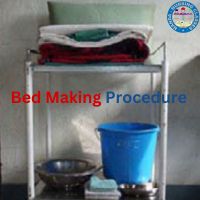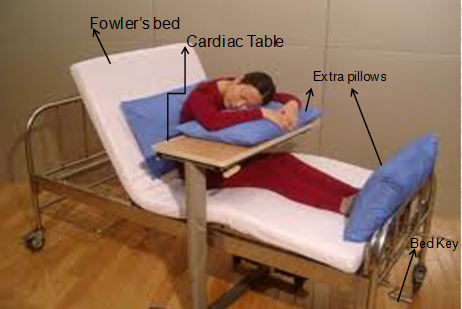The vital signs
Aspiring nurses embarking on their educational journey need a thorough understanding of essential procedures, including vital signs. In this comprehensive guide “The Vital Signs – a Comprehensive Guide for Nursing Students”, we’ll explore the vital signs procedure for nursing students, providing insights into its introduction, definition, purpose, preparation of procedure, step-by-step process, aftercare, nursing considerations, and much more. This article will serve as your expert companion, offering valuable insights and answers to frequently asked questions. You may also download Vital Signs Procedure PDF for further information. So lets began:
Table of Contents
Introduction
The vital signs procedure is a fundamental aspect of nursing practice, as it allows healthcare professionals to assess a patient’s overall health. It involves measuring specific physiological parameters that provide critical information about a patient’s well-being.

Vital Signs Definition
Vital signs encompass a set of measurements, including heart rate, blood pressure, respiratory rate, temperature, and oxygen saturation. These measurements are essential for evaluating a patient’s vital physiological functions.
Vital Signs Purpose
The primary purpose of monitoring vital signs is to detect any deviations from normal ranges and identify potential health issues promptly. It enables nurses to take timely action, ensuring the best possible care for patients. The significant purpose of taking vital signs by nurses in a hospital underlines the importance of this fundamental healthcare procedure. The important purposes of taking vital signs are:
- Early Detection of Health Issues
- Assessment of Overall Health
- Monitoring Response to Treatment
- Identifying Signs of Deterioration
- Tailoring Care Plans
- Enhancing Patient Safety
Indication of taking Vital Signs
Vital signs are routinely monitored in various clinical settings, such as hospitals, long-term care facilities, clinics, Community fields, and industrial fields. They are a standard part of patient assessment or early detection of abnormality and can also be requested in emergency situations.
Preparation of Articles
Before conducting a vital signs assessment, nurses need to gather the necessary equipment. This includes a stethoscope, blood pressure cuff, thermometer, pulse oximeter, and a watch or timer. Let’s understand the rationale for taking these following atrial to use what measurement or we will learn the measurement of Vital Signs which article is used and what’s the rationale of particular vital signs by these give table:
| Articles | Measurement | Rational |
|---|---|---|
| ArticlesStethoscope or Pulse Oximeter | MeasurementHeart Rate Measurement | RationalThe heart rate, or pulse, is a key indicator of cardiovascular health. It is measured using a stethoscope to listen to the heartbeat or a pulse oximeter to assess the pulse rate and oxygen saturation. Monitoring the heart rate is essential in identifying irregularities, such as arrhythmias or tachycardia, which can indicate heart-related issues. |
| ArticlesSphygmomanometer (Blood Pressure Cuff) and Stethoscope | MeasurementBlood Pressure Measurement | RationalBlood pressure measurement is crucial in assessing a patient’s circulatory health. The sphygmomanometer, commonly known as a blood pressure cuff, is used in conjunction with a stethoscope to measure systolic and diastolic blood pressure. High or low blood pressure can signify various medical conditions, including hypertension and hypotension. |
| ArticlesObservation or Timer | MeasurementRespiratory Rate Assessment | RationalRespiratory rate is a measure of how many breaths a patient takes per minute. It is typically assessed by observing the rise and fall of the chest or by using a timer to count breaths. Changes in respiratory rate can indicate respiratory distress, such as hyperventilation or bradypnea, which may require immediate attention. |
| ArticlesThermometer | MeasurementTemperature Measurement | RationalTemperature measurement is essential to detect fever or hypothermia. A thermometer is used to assess the patient’s body temperature. A high temperature can indicate infection or inflammation, while a low temperature may be a sign of hypothermia. |
| ArticlesPulse Oximeter | MeasurementOxygen Saturation Assessment | RationalOxygen saturation, often referred to as SpO2, measures the percentage of oxygen bound to hemoglobin in the blood. A pulse oximeter is used to assess this vital sign. Monitoring oxygen saturation is crucial in identifying respiratory issues, such as hypoxemia, which can lead to tissue damage and organ dysfunction |
Preparation of the Patient
Before taking vital signs, you must understand the general condition of the patient and it also depends on the condition of taking vital signs which may be routine care or an emergency condition. In routine care, it’s crucial to create a comfortable and private environment for the patient. Explain the procedure, obtain informed consent, and ensure the patient is at rest before measurements. In many cases, the preparation of the patient for taking Vital signs depended on the protocol of hospital settings.
Step-by-Step Vital Signs Procedure
Let’s delve into the step-by-step process of assessing vital signs. To take vital signs in 5 minutes, you can follow these steps:
Prepare the patient
Have the patient sit in a comfortable chair with their feet flat on the floor and their back supported. Ask them to relax for 5 minutes before you begin taking their vital signs.
Take the temperature.
Place a thermometer under the patient’s tongue and ask them to close their mouth, axilla, or whatever site you prefer. Leave the thermometer in place for the amount of time specified by the manufacturer promaxillary it take 3 or less than 3 minutes. In that remaining time, you have to take respiration observation. Normal body temperature is around 98.6°F or 37°C.
Take the respiration rate.
Place two fingers on the patient’s chest, between the nipples and observe how many times chest goes up and down that up and down measures as a breath of particular patient’s breath. Count the number of breaths for one minute. When you get perfect in observation of breaths use this trick is that you Count the number of breaths for 15 seconds. Multiply this number by 4 to get the respiration rate per minute. The typical range for adults is 12-20 breaths per minute.
Take the blood pressure.
Wrap the blood pressure cuff snugly around the patient’s upper arm, about 1 inch above the bend in the elbow. Position the cuff so that the artery marker is centered over the brachial artery. Place the stethoscope over the brachial artery, just below the cuff. Inflate the cuff until the pulse disappears. Then, slowly release the air from the cuff while listening for the first sound (systolic pressure) and the last sound (diastolic pressure). If you use digital sphygmomanometer, than only you have to just wrap the cuff at wright please and just press start button, it measures automatically blood pressure and pulse measurement too. Normal blood pressure for adults is around 120/80 mm Hg.
Take the pulse.
If you are using digital sphygmomanometer, the measurement or value of pulse is counted already but if you measure manually than Place two fingers of your dominant hand on the inside of the patient’s wrist, just below the base of the thumb. Press lightly and count the number of beats for 15 seconds. Multiply this number by 4 to get the pulse rate per minute. The normal range of pulse for adults is 60-100 beats per minute.
Take the Oxygen Saturation
To measure oxygen saturation, place a pulse oximeter to fingertip it determines oxygen saturation levels. Normal oxygen saturation is typically 95% or higher.
Once you have taken all of the vital signs, record them on a patient chart or in an electronic medical record.
Here are some tips for taking vital signs quickly and accurately:
- Use a digital thermometer for the most accurate temperature reading.
- If you difficult to measure pulse and respiration rate, you can use a stethoscope to listen for it.
- If the patient is obese, you may need to use a larger blood pressure cuff.
- If the patient has a history of heart problems, you may need to take their blood pressure more often.
Please note that these are general guidelines. Always follow the specific instructions of your healthcare provider.
After Care of Articles
After completing the assessment of the vital signs, you must disinfect articles by settings protocol, in general, disinfect the thermometer, and discard any waste as per BMW guidelines. it’s essential to document the results accurately. Any abnormal findings should be reported promptly to the healthcare team for further evaluation and treatment.
Nursing Consideration
Nurses play a vital role in ensuring the accuracy of vital signs assessment. They should be aware of factors that can affect the readings, such as patient positioning, environment, and equipment calibration.
Conclusion
Understanding the vital signs procedure is paramount for nursing students as it forms the foundation of patient assessment and care. This comprehensive guide has explored the introduction, definition, purpose, preparation, step-by-step process, aftercare, nursing considerations, and answered essential questions. By mastering this procedure, nursing students are better equipped to provide optimal healthcare. For more expert guidance and resources, explore our other articles.
Also, read
FAQs
What if a patient’s vital signs are outside the normal range?
If a patient’s vital signs fall outside the normal range, it may indicate an underlying health issue. In such cases, the healthcare provider should be informed immediately for further evaluation and intervention.
Are vital signs assessments only performed in hospitals?
No, vital signs assessments are conducted in various healthcare settings, including clinics, doctor’s offices, and even in-home care. They are a standard part of patient evaluation.
Can vital signs be affected by anxiety?
Yes, anxiety and stress can influence vital signs. Anxious patients may exhibit an increased heart rate and blood pressure. It’s crucial for healthcare professionals to consider these factors during assessments.
How often should vital signs be checked?
The frequency of vital signs assessments depends on the patient’s condition. In some cases, they may be checked every 4-8 hours, while in critical care, it can be continuous monitoring.
Is it necessary to obtain informed consent before assessing vital signs?
Informed consent is essential before any medical procedure, including vital signs assessment. It ensures that the patient is aware of the procedure and provides consent for it to be conducted.
What are the common errors in vital signs assessment?
Common errors in vital signs assessment include improper equipment use, inadequate patient preparation, and documentation mistakes. Nurses should receive proper training to minimize these errors.
Please may ask any doubt or if you have any query ask feel to free in comment section or join our social platform.


